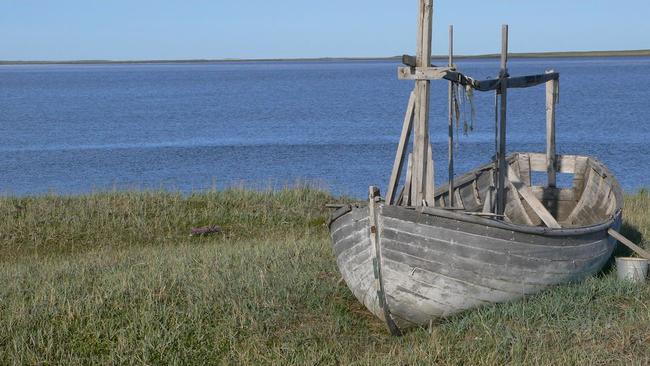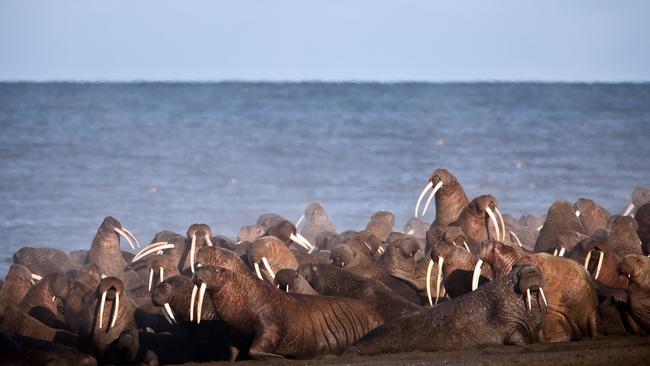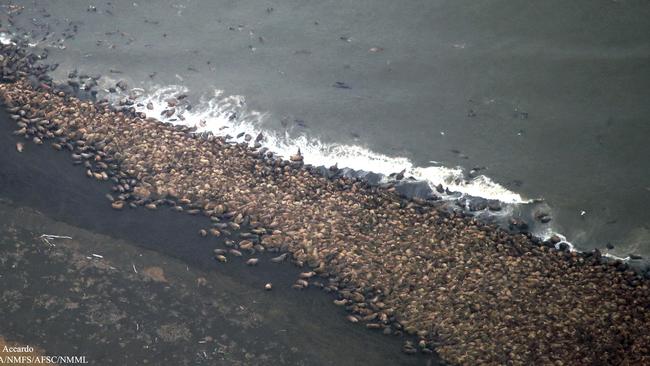This Alaskan village is begging tourists to please go away
MOST tourism campaigns hope to draw in visitors. But this pretty American village is working on a reverse strategy: it’s begging tourists to bugger off.

MOST tourism campaigns involve spruiking local attractions in the hope of drawing in visitors.
But this tiny village is working on an anti-tourism strategy: it’s begging tourists to stay away.
The remote Inupiaq village of Point Lay, on Alaska’s northwest coast, is seeing an enormous influx of Pacific walruses — as many as 6000 last week alone — which are coming ashore due to the disappearing summer sea ice.
The phenomenon has attracted hordes of tourists hoping to catch a glimpse of the marine mammals. But Point Lay has no restaurants, no hotels and a population of only 270 people, so it’s hardly a tourist town.

Tourist boats and planes also risk spooking off the walruses, which are a food source for the local Inupiaq people.
So in one of the world’s more unlikely tourism campaigns, the town is asking visitors to kindly bugger off.
“They’ve had people come and had no place to accommodate them and they ended up having to tell the person to get back on the plane and head out,” US Fish and Wildlife Service spokeswoman Andrea Medeiros told AP.
“I would imagine it’s a very awkward situation for them.”
Locals are also concerned about the safety of tourists who need to hitch a hazardous ride across a cove in order to see the walrus spectacle from a barrier island.

And they’ve also got a problem with pesky press photographers flying too close to the walruses, prompting Point Lay Tribal Council president Leo Ferreira to issue a statement last week reiterating the village’s “no media policy” when the walruses were on the shore.
The town is now working with the US Fish and Wildlife Service to develop its anti-tourism strategy.
The agency has received a $185,300, two-year grant from the National Fish and Wildlife Foundation to help them train local young people in photographing and filming the animals for education purposes, and to track the age, sex and any deaths of the walruses.
The walruses started to come ashore on Alaska’s northwest in 2007, largely due to warming temperatures causing the edge of the sea ice to recede far too north for the walruses to dive and eat.
In September 2015, as many as 35,000 walruses packed a beach near Point Lay, AP reported.



